احصل على عينات مجانية
احصل على عينات مجانية
As the global trend toward sustainable development accelerates, eco-friendly packaging has become a focal point for many industries. The flexible packaging sector, as a significant branch of packaging, is also pushing forward the development and application of recyclable packaging. The emergence of the mono recyclable metalized pouch offers a new eco-friendly solution that combines high barrier protection with sustainability. This type of packaging not only provides efficient product protection but also complies with increasingly stringent environmental regulations, meeting the market demand for sustainable packaging. This article will delve into the features, advantages, and practical applications of this innovative packaging material.
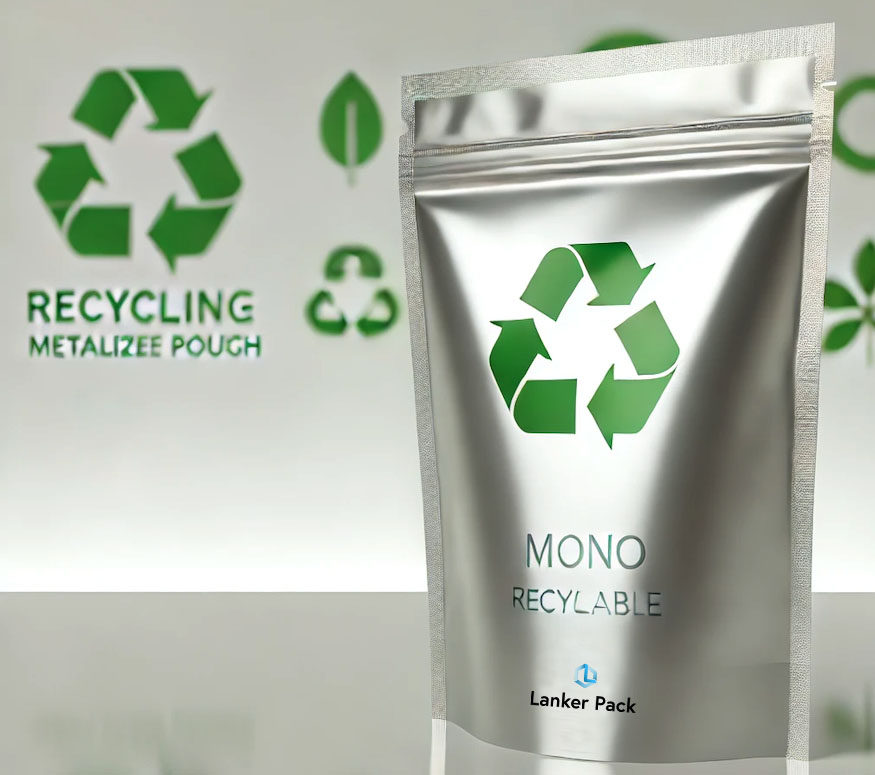
ال mono recyclable metalized pouch is made from a single material—polyethylene (PE). Its most notable advantage is its full recyclability. Compared to traditional multi-layer composite materials, the mono-material design simplifies the recycling process. Multi-layer composite materials are difficult to separate, posing challenges in the recycling process, whereas mono PE materials can easily enter existing plastic recycling systems, significantly reducing recycling complexity and costs.
This design not only aligns with international environmental trends but also helps brands gain a competitive edge in a market where eco-consciousness is growing. Global consumers and governments are placing increasing emphasis on recyclable packaging, driving companies toward the goal of reducing plastic pollution. Lanker Pack's mono metalized recyclable material offers customers a packaging option that is both eco-friendly and highly efficient.
In the flexible packaging market, high barrier protection has always been a key requirement, particularly for products sensitive to moisture, oxygen, and odors. The mono recyclable metalized pouch significantly enhances packaging barrier properties by incorporating a metalized layer within the PE structure. This metalized layer effectively prevents the penetration of moisture, oxygen, and other gases, thus extending the product's shelf life.
Moreover, the metalized layer provides light-proof protection, essential for products sensitive to light. For instance, coffee beans, pharmaceuticals, and certain foods are prone to degradation when exposed to light. The excellent light-proofing effect of the metalized layer ensures the stability of the product’s quality throughout the supply chain.
In the food packaging sector, especially for products that demand high freshness, the mono recyclable metalized pouch provides an ideal solution. Products such as coffee, nuts, and baked goods, which are sensitive to moisture and oxygen, can benefit from this packaging, as it effectively extends their shelf life. Multiple large food enterprises among Lanker Pack’s clients have adopted this material and received positive market feedback.
Additionally, the lightweight design of this packaging reduces carbon emissions during transportation, further enhancing the eco-friendly image of food companies. Lightweight packaging means lower energy consumption during transport, which reduces the environmental footprint in the supply chain and lowers logistics costs.
Beyond the food sector, the mono recyclable metalized pouch also performs well in non-food industries. For example, personal care products, pharmaceuticals, and electronics often require packaging with high barrier protection and light-proofing. Especially in pharmaceutical packaging, high barrier protection helps prevent moisture and oxygen ingress, ensuring product stability and safety.
حزمة لانكر developed a customized mono metalized recyclable packaging solution for an international pharmaceutical brand, helping to address the sensitivity of their products to moisture and light while ensuring the packaging meets global environmental regulations. This material is gaining popularity in pharmaceutical and personal care packaging, showing strong market potential.
More and more countries and regions are implementing stringent environmental regulations, requiring companies to reduce plastic waste and increase the recyclability of product packaging. Against this backdrop, the market demand for the mono recyclable metalized pouch is growing significantly. This type of packaging not only meets sustainability requirements but also helps companies avoid potential environmental taxes and fines.
Lanker Pack’s R&D team keeps pace with market trends and is committed to providing packaging solutions that meet the latest environmental regulations. Through innovative material design and continuous optimization of technology, Lanker’s mono metalized recyclable material not only achieves environmental goals but also receives high praise from customers for its performance and appearance.
In the future, as technology continues to evolve, the material performance of the mono recyclable metalized pouch will improve further. حزمة لانكر is actively exploring ways to enhance material toughness and tear resistance while maintaining high barrier and light-proof protection. This not only improves the packaging’s durability during logistics but also makes it more compatible with high-speed production lines in automated packaging systems.
Additionally, as market competition for eco-friendly packaging materials intensifies, companies must focus on reducing production costs while maintaining environmental sustainability. حزمة لانكر has optimized its production processes to reduce material costs without sacrificing performance, providing customers with more competitive solutions.
ال mono recyclable metalized pouch is not only a model for the flexible packaging industry's shift toward sustainability but also a perfect combination of high-performance packaging materials and the demand for sustainable development. With the metalized layer providing excellent barrier protection and light-proofing, it is suitable for industries that require high levels of product protection. Through continuous technological innovation, حزمة لانكر has successfully applied this material to various product packaging, offering eco-friendly and efficient packaging choices for global customers.
In the future, as environmental regulations become stricter and consumer awareness of sustainability grows, the mono recyclable metalized pouch will undoubtedly play an increasingly important role in the market. حزمة لانكر will continue to lead this trend, committed to providing more environmentally friendly and efficient packaging solutions for the global market.
Through this innovative packaging design, we can not only protect the quality of products but also contribute to a sustainable future. This is undoubtedly the key direction for the future development of the flexible packaging industry.
As more companies actively join the "2025 Squad," recyclable packaging has become a major industry trend. According to a report by Smithers, it is estimated that by 2025, mono-material film packaging will grow at a compound annual growth rate of 3.8%, reaching $71 billion. We are already seeing numerous applications of mono-material packaging in the global market.
نجحت العلامة التجارية الشهيرة للوجبات الخفيفة Laiyifen في حل التحديات المرتبطة بالتغليف البلاستيكي المركب متعدد الطبقات من خلال عبواتها الناعمة أحادية المادة. في الأصل باستخدام أكياس مكونة من ثلاث مواد مختلفة، قامت Laiyifen بتبسيط الهيكل إلى طبقتين من مادة أحادية، مما يقلل من استخدام البلاستيك بحوالي 15-17% لكل كيس. تتميز العبوة أيضًا بتصميم بسيط، مما يقلل من مساحة الطباعة بنسبة 40-50% تقريبًا. وبالتالي، فإن هذه العبوة البلاستيكية المرنة قابلة لإعادة التدوير بالكامل، ويمكن تجديدها بسهولة، وتتميز ببنية كيميائية موحدة تسمح بتجديدها فعليًا في عبوات مماثلة أو منتجات بلاستيكية أخرى بعد إعادة التدوير.
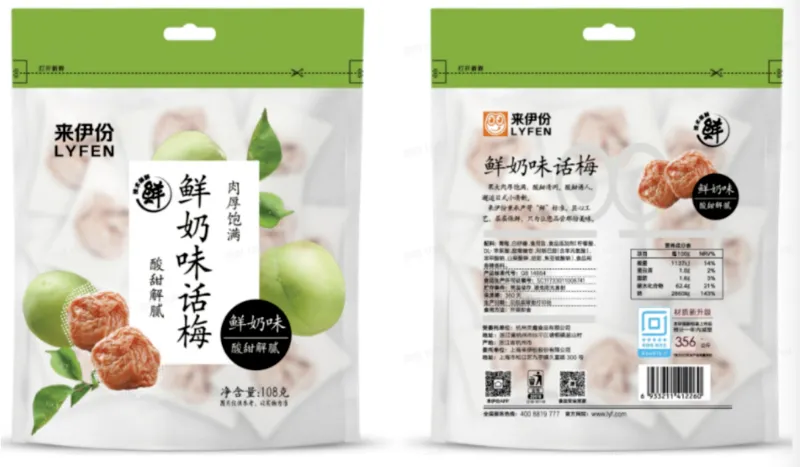
Mars Incorporated has introduced the Low-GI Dark Chocolate Fiber Bar, which uses mono-material packaging film for its individual wrappers, making them easily recyclable and environmentally friendly. This packaging follows the "Design for Recycling" principle and can be recycled within the scope of the "Soft Plastics Renewal" project. The individual wrappers are made of single polypropylene material, adhering to the "circular design" principles. Mars has also implemented rigorous internal verification and quality standards to ensure that the packaging film meets food safety requirements while protecting the product's quality inside. Furthermore, the outer packaging box is made from paper materials certified by the Forest Stewardship Council (FSC), supporting sustainable forest management while reducing plastic usage.
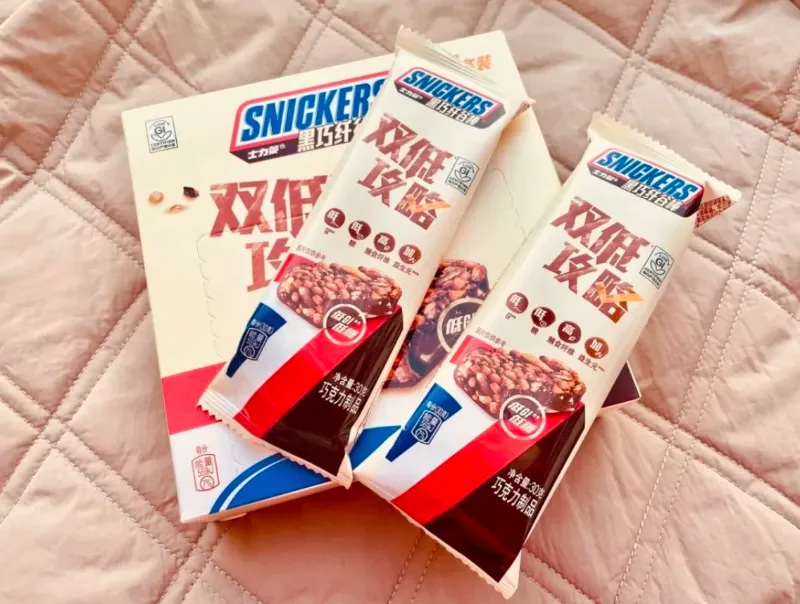
بالنسبة للعلامات التجارية للسلع الاستهلاكية سريعة الحركة، يعد فهم وعي المستهلك والمتطلبات البيئية للتعبئة في الأسواق المستهدفة أمرًا بالغ الأهمية، خاصة في المناطق ذات الأنظمة البيئية الأكثر نضجًا والوعي بالاستدامة على نطاق واسع، مثل الاتحاد الأوروبي والولايات المتحدة.
السياق التنظيمي:
وفي الاتحاد الأوروبي، تضع الصفقة الخضراء الأوروبية وخطة عمل الاقتصاد الدائري الأساس للتغليف المستدام. ينص توجيه الاتحاد الأوروبي لنفايات التغليف والتعبئة (PPWD) على أنه بحلول عام 2030، يجب أن تكون جميع العبوات الموجودة في سوق الاتحاد الأوروبي قابلة لإعادة الاستخدام أو إعادة التدوير بطريقة مجدية اقتصاديًا. يؤكد هذا التوجيه على تقليل نفايات التغليف ويشجع على استخدام المواد القابلة لإعادة التدوير. ويجب على الشركات تكييف تصميمات التغليف الخاصة بها لتلبية هذه المتطلبات الصارمة، مما يضمن إمكانية فرز المواد وإعادة تدويرها بسهولة.
وفي الولايات المتحدة، تتطور اللوائح أيضًا لدعم حلول التغليف القابلة لإعادة التدوير والمستدامة. إن تحدي الابتكار في مجال البلاستيك وقانون Save Our Seas 2.0 هما مبادرتان تهدفان إلى تقليل النفايات البلاستيكية وتعزيز إعادة التدوير. بالإضافة إلى ذلك، نفذت ولايات مختلفة قوانين مسؤولية المنتج الموسعة (EPR) التي تتطلب من المنتجين تحمل مسؤولية إدارة نهاية عمر عبواتهم، وتحفيز استخدام المواد القابلة لإعادة التدوير وتقليل نفايات التعبئة والتغليف.
خاتمة:
مع تحول الأسواق العالمية نحو الاستدامة، فإن تبني حلول التغليف القابلة لإعادة التدوير لا يعد متطلبًا تنظيميًا فحسب، بل يعد أيضًا ميزة تنافسية. وتتصدر العلامات التجارية مثل Laiyifen وMars الطريق من خلال اعتماد التغليف أحادي المادة، مما يدل على أنه من الممكن تلبية المعايير التنظيمية وتوقعات المستهلكين فيما يتعلق بالمنتجات الصديقة للبيئة. بالنسبة للشركات التي تتطلع إلى التوسع دوليًا، يعد فهم لوائح التغليف المحلية والامتثال لها أمرًا ضروريًا. ومن خلال إعطاء الأولوية للتغليف المستدام، يمكن للشركات المساهمة في اقتصاد أكثر دائرية وبناء علاقات أقوى مع المستهلكين المهتمين بالبيئة.
يعد هذا التحرك نحو التغليف المستدام خطوة حاسمة في ضمان كوكب أكثر صحة وأعمال تجارية مزدهرة. وبينما نتطلع إلى عام 2025 وما بعده، سيظل اعتماد التغليف القابل لإعادة التدوير عاملاً محددًا في نجاح العلامات التجارية واستدامتها في جميع أنحاء العالم.
غالبًا ما يسير النبيذ والرقي جنبًا إلى جنب، وكذلك العبوة التي تحمل هذا المشروب القديم. في حين أن الزجاجات والفلين كانت الخيار التقليدي منذ فترة طويلة، إلا أن اتجاهًا جديدًا آخذ في الظهور: أكياس النبيذ. هل يمكن أن يكون هذا الابتكار الحديث هو مستقبل تعبئة النبيذ الفاخر؟

تتكون حقيبة النبيذ عادة من مادة قوية ومرنة مصممة لاحتواء السائل. غالبًا ما يأتي مزودًا بصنبور أو صنبور لسهولة الصب، مما يسمح للمستهلكين بالاستمتاع بالنبيذ دون فتح زجاجة كاملة.
تُصنع أكياس النبيذ بشكل عام من طبقات متعددة من البلاستيك والرقائق ومواد أخرى لحماية النبيذ من الضوء والأكسجين والروائح الخارجية، وكلها يمكن أن تؤثر على جودته.
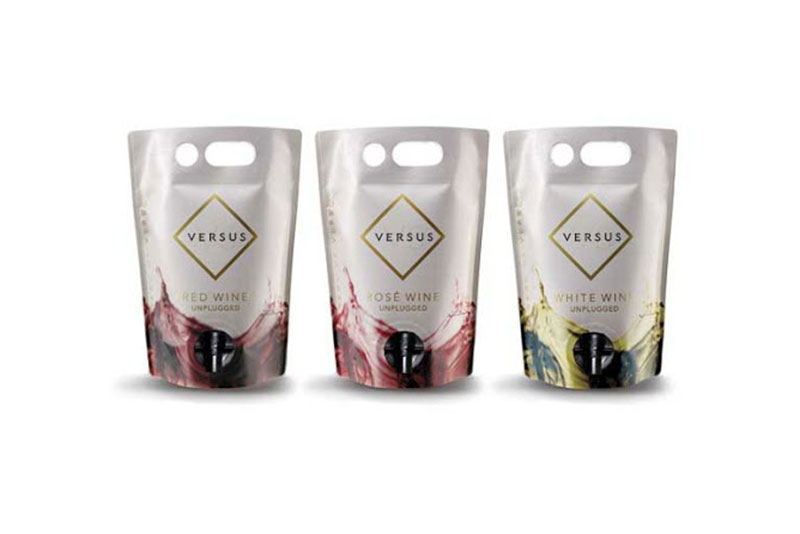
واحدة من أهم فوائد أكياس النبيذ هي قابليتها للنقل. إنها أسهل في الحمل وأقل هشاشة من الزجاجات التقليدية، مما يجعلها مثالية للنزهات أو المناسبات الخارجية أو حتى مجرد ليلة عادية في المنزل.
غالبًا ما تأتي أكياس النبيذ مزودة بصنبور مفرغ من الهواء، مما يسمح لك بسكب كوب دون تعريض النبيذ المتبقي للهواء. تعمل هذه الميزة على إطالة عمر النبيذ بعد الفتح.
تزن أكياس النبيذ أقل من الزجاجات، مما يؤدي إلى انخفاض تكاليف النقل وتقليل البصمة الكربونية.

تساعد خصائص الحاجز القوية لمواد الحقيبة في الحفاظ على نكهة النبيذ الأحمر والعفص.
يمكن للأكياس حماية النبيذ الأبيض من التعرض للضوء، مما يجعلها خيارًا مناسبًا للحفاظ على نكهاتها الرقيقة.
على الرغم من أنها أقل شيوعًا، إلا أن النبيذ الوردي والنبيذ الفوار يشق طريقه إلى عبوات الأكياس.
يتساءل بعض المستهلكين عما إذا كانت أكياس النبيذ يمكن أن تقدم نفس تجربة الجودة التي توفرها الزجاجات التقليدية.
يلعب تصميم العبوة، بما في ذلك شكل وملمس الحقيبة، دورًا مهمًا في جذب مستهلك النبيذ الحديث.
مطلوب آلات متخصصة لملء وإغلاق أكياس النبيذ، خاصة عندما تكون مزودة بصنبور أو صنبور.
على الرغم من أن الاستثمار الأولي يمكن أن يكون مرتفعًا، إلا أن انخفاض تكلفة المواد والنقل غالبًا ما يؤدي إلى وفورات طويلة الأجل.
تظهر الابتكارات باستمرار لصنع أكياس النبيذ من مواد أكثر استدامة، مثل البلاستيك الحيوي.
في حين أن إعادة تدوير الأكياس التقليدية قد تشكل تحديًا، إلا أن الجهود جارية لتطوير خيارات قابلة لإعادة التدوير بالكامل أو قابلة للتحويل إلى سماد.
تفرض المتطلبات القانونية وضع علامات محددة على محتوى الكحول، والتي تختلف من بلد إلى آخر.
يجب أن تكون تدابير مراقبة الجودة صارمة لضمان احتفاظ النبيذ بسلامته طوال فترة صلاحيته.
نجحت بعض مصانع النبيذ في تحويل جزء من خط إنتاجها إلى تعبئة الأكياس، مما أدى إلى اكتساب مجموعة سكانية جديدة من العملاء.
إن الانتقال إلى تغليف الأكياس لا يخلو من العقبات، بما في ذلك تصور المستهلك والتحديات التنظيمية.
ينمو سوق أكياس النبيذ بشكل مطرد، خاصة بين مستهلكي جيل الألفية والجيل Z الذين يعطون الأولوية للراحة والاستدامة.
ويجري باستمرار تطوير مواد جديدة وتقنيات الختم، مما يعد بمستقبل أكثر إشراقًا لأكياس النبيذ.
تعد حقيبة النبيذ ابتكارًا مدمرًا يتحدى المفاهيم التقليدية لما يجب أن تكون عليه عبوات النبيذ. إن فوائده من حيث قابلية النقل والحفظ وتقليل التأثير البيئي تجعله خيارًا مقنعًا لكل من المستهلكين والمنتجين. على الرغم من وجود تحديات، خاصة فيما يتعلق بتصور المستهلك وإمكانية إعادة التدوير، فمن المرجح أن تؤدي الابتكارات المستمرة إلى دفع أكياس النبيذ إلى القبول السائد.
لذا، هل أنت مستعد لرفع الحقيبة لمستقبل تغليف النبيذ؟ بفضل فوائدها التي لا تعد ولا تحصى والتكنولوجيا المتطورة باستمرار، فإن حقيبة النبيذ في طريقها إلى أن تصبح عنصرًا أساسيًا في عالم النبيذ الفاخر. هتاف للابتكار!
Are you tired of fumbling with unwieldy bottles or concerned about product waste due to spillage? Enter the era of spout pouches with spouts, an innovative packaging solution that marries convenience with functionality. Let's delve into what makes this packaging format a revolution in liquid handling.

The spout serves as the outlet for the liquid and can come in various shapes and sizes. It often includes a cap for resealing the pouch after use.
The body of the spout pouch is typically made of layered materials that provide the necessary barrier properties to preserve the contents.
While the top-center is a common position, spout placement can vary depending on the product's intended use and the manufacturer's design philosophy.
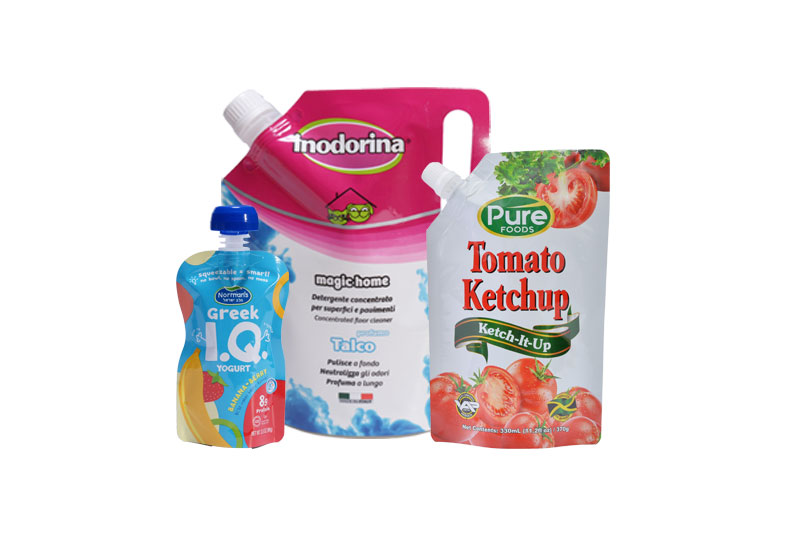
Imagine not having to unscrew a cap every time you need to pour a liquid. Spout pouches offer unparalleled ease of use.
The focused directionality of the spout minimizes the risk of spilling, thereby reducing product waste.
With the ability to reseal the pouch after each use, spout pouches maintain product freshness for extended periods.
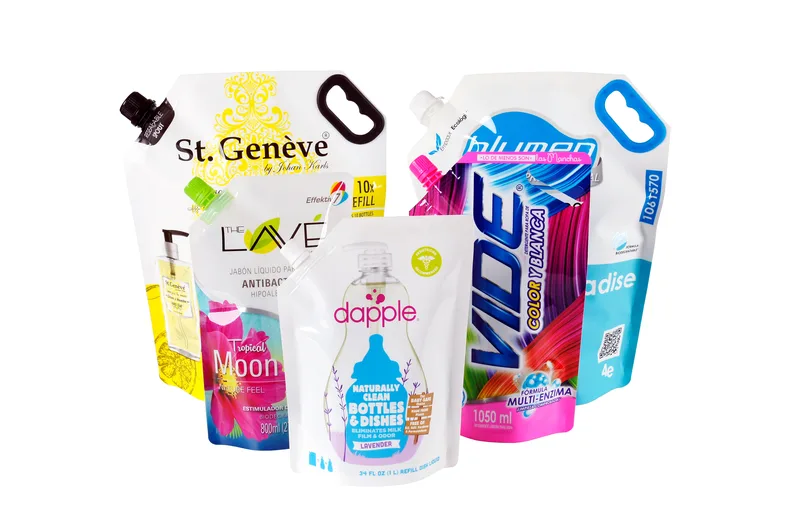
Most spout pouches are primarily made of various types of plastic for durability and low cost.
Some spout pouches incorporate a layer of foil to improve barrier properties, particularly for sensitive contents.
Advanced spout pouches often utilize multi-layer films that combine the best properties of various materials.
From juices to sauces, spout pouches are becoming increasingly popular in the food and beverage sector.
Cleaning supplies, detergents, and even gardening products find a safe and convenient home in spout pouches.
Oils, lubricants, and other industrial liquids can be packaged effectively using spout pouches.
The diameter of the spout affects pour speed and control, requiring careful design choices based on the liquid's viscosity.
Various cap designs offer different levels of security and ease of use, ranging from simple screw caps to more complex, child-proof options.
A resealable spout ensures that the contents remain fresh and usable for an extended period, thereby enhancing product lifespan.
Incorporating child safety features in the spout design is essential for products that could be hazardous if ingested.
To ensure product integrity, tamper-evident seals are often included in the design of spout pouches.
In the quest for more sustainable packaging, biodegradable spout pouches are slowly emerging as a viable alternative.
Multi-layered spout pouches pose a challenge for recycling, and efforts are underway to develop more easily recyclable versions.
The design of a spout pouch must cater to consumer needs for ease of handling and pouring.
The visual appeal of the spout pouch, including its color and branding, plays a significant role in consumer choice.
Manufacturers must adhere to stringent food safety standards when producing spout pouches for edible items.
Environmental considerations are increasingly influencing the materials and processes used in spout pouch manufacturing.
Spout pouches with spouts are not merely a fad; they are a transformative force in the world of packaging. They offer a slew of benefits ranging from user convenience to improved product integrity. While there are challenges in the areas of sustainability and regulation, ongoing innovations promise to make these packaging solutions even more compelling in the future.
Isn't it amazing how something as simple as adding a spout to a pouch can create a packaging solution that transforms the consumer experience? With their blend of convenience and innovation, spout pouches are undoubtedly shaping the future of liquid packaging.
In the ever-evolving world of packaging, gusset pouches are making their mark. But what are gusset pouches, and why are they becoming increasingly popular among both consumers and businesses? This article delves into the details, shedding light on this innovative packaging solution.
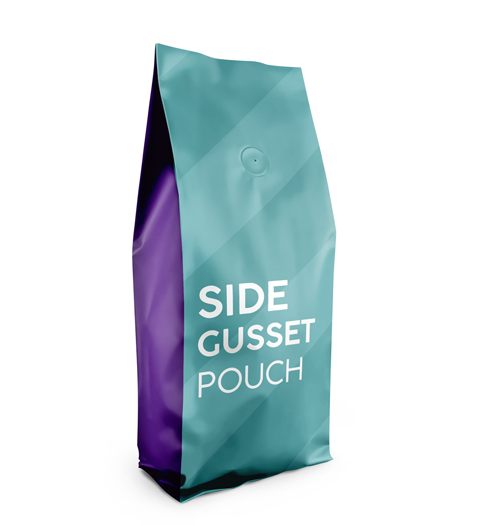
Side gusset pouches are designed with gussets on both sides, expanding the bag’s capacity. They are commonly used for products like coffee, tea, and baked goods.
In bottom gusset pouches, the gusset is located at the bottom, providing a stable base for the pouch to stand upright. This design is ideal for products like pet food and granular items.
Quad seal pouches are constructed with four corner seals, offering exceptional strength and stability. These are ideal for heavier products and bulk items.
One of the key benefits of gusset pouches is their ability to efficiently use space, both in terms of storage and on retail shelves.
From food items to garden soil, gusset pouches can be customized to suit a wide range of products, offering incredible versatility.
Constructed using various materials, including strong plastics and foils, gusset pouches offer excellent protection against external elements.
The larger surface area of gusset pouches provides ample space for branding, making them a fantastic marketing tool.
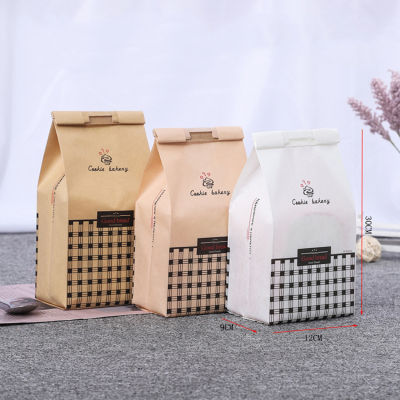
Plastic gusset pouches are durable and offer good barrier properties but may raise sustainability concerns.
Foil-based gusset pouches offer excellent barrier properties and are commonly used for sensitive products.
For brands looking for a more eco-friendly option, kraft paper gusset pouches are increasingly popular.
Gusset pouches are extensively used in the food and beverage sector for packaging items like coffee, snacks, and dry fruits.
The sturdy design of gusset pouches makes them ideal for pet food packaging, especially for larger quantities.
Items like fertilizers, soil, and seeds are often packaged in gusset pouches due to their durability and space-efficiency.
Certain medications and health supplements also find their way into gusset pouches for their protective qualities.
Improper sealing can compromise the quality of the product, necessitating rigorous quality checks.
Not all products are compatible with every type of gusset pouch material, requiring careful selection.
The cost of gusset pouches can be higher than traditional bag types, especially for small-scale businesses.
Innovations in barrier layers are enhancing the protective qualities of gusset pouches, especially for sensitive products.
The addition of re-sealable zippers is a game-changer, offering consumers added convenience.
The multi-layer construction of some gusset pouches can make recycling a challenge.
Emerging biodegradable materials offer a sustainable alternative, although they are not yet widely available.
The design of gusset pouches, often with re-sealable options, makes them user-friendly and convenient.
The modern look and feel of gusset pouches often make them more attractive to consumers, adding to their growing popularity.
Gusset pouches are revolutionizing the way we think about packaging. From their space-efficient design to their versatility, they offer numerous advantages that both consumers and manufacturers can appreciate. Although challenges exist, technological advancements are continually improving their functionality and sustainability.
Isn't it fascinating how a simple design change can make a world of difference in packaging? The gusset pouch is more than just a trend; it's a promising solution for the future of packaging.
مع تزايد الوعي حول الاستدامة البيئية، تكتسب عبوات الأكياس الورقية قوة جذب كبيرة. ولكن ما هو بالضبط تغليف الأكياس الورقية، ولماذا أصبحت الخيار المفضل لكل من المستهلكين والمصنعين على حد سواء؟ يهدف هذا الدليل إلى الإجابة على هذه الأسئلة وأكثر.
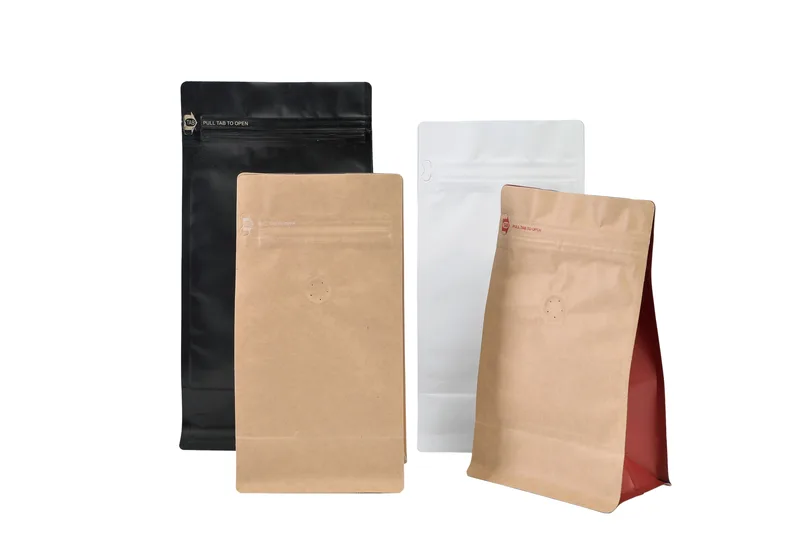
أكياس ورق الكرافت مصنوعة من اللب الكيميائي المنتج في عملية الكرافت. إنها قوية ومتينة وغالبًا ما تستخدم لتعبئة الحبوب والتوابل والسلع الجافة الأخرى.
كما يوحي الاسم، هذا النوع من الورق مقاوم للشحوم ومثالي لتغليف الأطعمة الزيتية أو المخبوزات.
تحتوي الأكياس الورقية المطلية على طبقة رقيقة من مادة مثل الشمع أو البوليمر، مما يعزز خصائصها العازلة ضد الرطوبة والهواء.
يتضمن الورق الرقائقي دمج نوعين أو أكثر من المواد، مما يوفر فوائد زيادة القوة وتحسين الشكل الجمالي وخصائص حاجز إضافية.
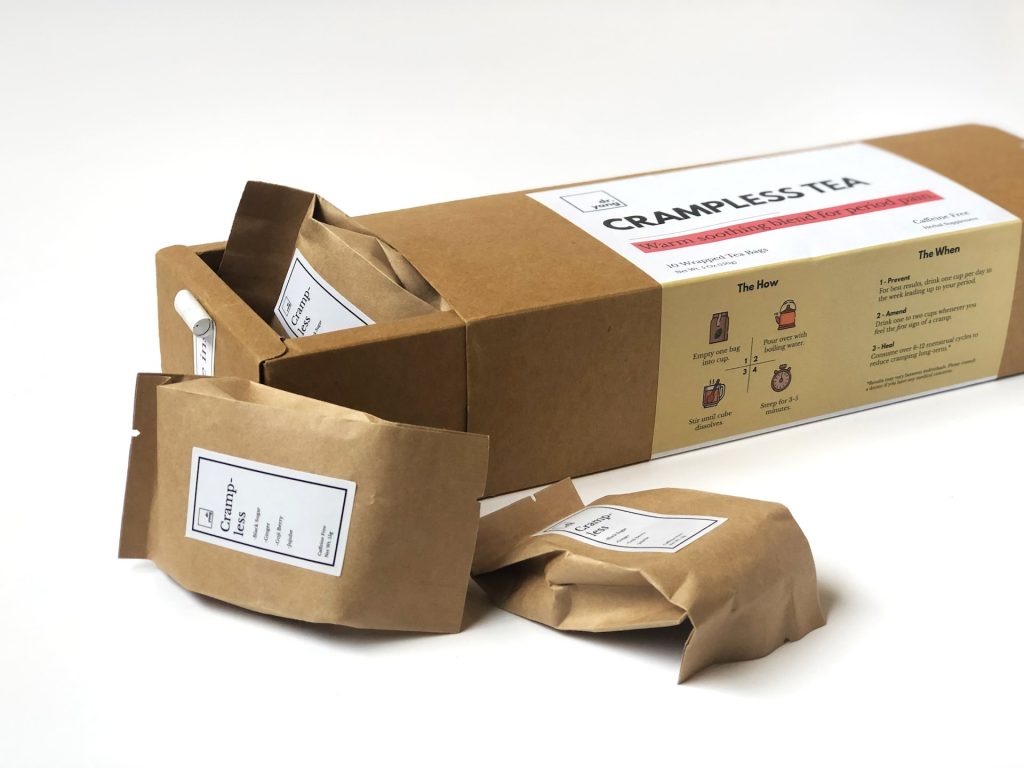
الأكياس الورقية مصنوعة من موارد متجددة ويمكن إعادة تدويرها بسهولة، مما يقلل من بصمتها الكربونية.
مع التقدم في تقنيات الطباعة، يمكن تخصيص الأكياس الورقية بطرق مختلفة، مما يسمح للعلامات التجارية بتوصيل رسالتها بشكل فعال.
بالإضافة إلى كونها قابلة لإعادة التدوير، فإن معظم الأكياس الورقية قابلة للتحلل الحيوي، مما يوفر حلاً لنهاية العمر يكون أفضل للبيئة.
غالبًا ما يجذب الشكل والملمس الطبيعي للورق المستهلكين، مما يضيف قيمة محسوسة للمنتج من الداخل.
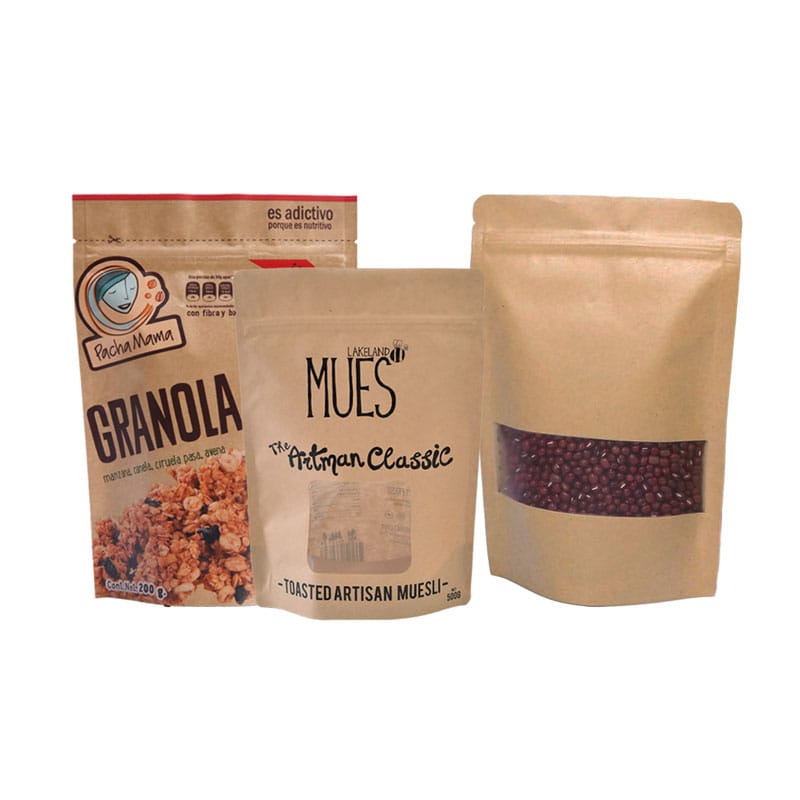
تحظى الأكياس الورقية بشعبية خاصة في قطاع الأغذية، حيث يتم استخدامها لتغليف الوجبات الخفيفة والقهوة والشاي وحتى بعض أنواع المنتجات الطازجة.
غالبًا ما تجد عناصر مثل أملاح الاستحمام وأقنعة الوجه ومنتجات التجميل العضوية طريقها إلى الأكياس الورقية المصممة بشكل جذاب.
في قطاع البيع بالتجزئة، تُستخدم الأكياس الورقية لتغليف مختلف العناصر الصغيرة مثل الملحقات والقرطاسية والهدايا.
توفر الأكياس الورقية بشكل عام حماية أقل ضد الرطوبة مقارنة بالبلاستيك، مما قد يكون عيبًا لبعض المنتجات.
على الرغم من التقدم الذي تم إحرازه، إلا أن الأكياس الورقية عمومًا أقل متانة من نظيراتها البلاستيكية، خاصة عندما يتعلق الأمر بالمناولة والنقل.
في حين أن المستهلكين على استعداد متزايد لدفع علاوة على الخيارات المستدامة، فإن تكلفة الأكياس الورقية يمكن أن تكون أعلى من الأكياس البلاستيكية التقليدية.
يتم تطوير أنواع جديدة من الطلاءات لتحسين خصائص حاجز الأكياس الورقية دون المساس بقابلية إعادة تدويرها.
تتيح تقنيات الطباعة الرقمية تصميمات أكثر تعقيدًا وحيوية، مما يجعل الأكياس الورقية أكثر جاذبية وعملية.
أصبح المستهلكون يدركون بشكل متزايد التأثير البيئي لخياراتهم، مما يجعل الخيارات المستدامة مثل الأكياس الورقية أكثر جاذبية.
تشير الدراسات إلى أن المستهلكين على استعداد لدفع ثمن أعلى للمنتجات التي يتم تعبئتها بشكل مستدام، وهو ما يبشر بالخير لمستقبل تغليف الأكياس الورقية.
يعد التحرك نحو تغليف الأكياس الورقية أكثر من مجرد اتجاه؛ إنه انعكاس لمواقف المستهلكين المتغيرة والمخاوف البيئية المتزايدة. ورغم استمرار التحديات، فإن الابتكارات التكنولوجية واستعداد المستهلك للتكيف تدفع الصناعة إلى الأمام.
أليس من اللافت للنظر كيف يمكن للتحول البسيط في مواد التعبئة والتغليف أن يحدث مثل هذا التأثير الكبير على كل من البيئة وسلوك المستهلك؟
Flexible packaging is an ever-evolving industry, pushing boundaries to meet consumer demands and environmental considerations. It is no longer just a way to contain a product; it's an extension of the brand and an essential part of the product experience. This guide aims to unpack the types, applications, properties, and sustainability of flexible packaging materials.

Plastics dominate the flexible packaging sector because of their versatility, lightweight, and low cost. Materials like polyethylene, polypropylene, and polyester are widely used for a variety of products, from food items to cosmetics.
Aluminum foil offers excellent barrier properties and is commonly used for sensitive items such as pharmaceuticals or premium food products. However, its environmental impact is a point of concern.
Although less protective than plastic or foil, paper-based flexible packaging is gaining traction due to its recyclability and biodegradability. It's an excellent choice for dry products like sugar, flour, and spices.
Materials like polylactic acid (PLA) derived from corn or sugarcane are emerging as a sustainable alternative to traditional plastics. These bio-based materials are compostable and provide good barrier properties.
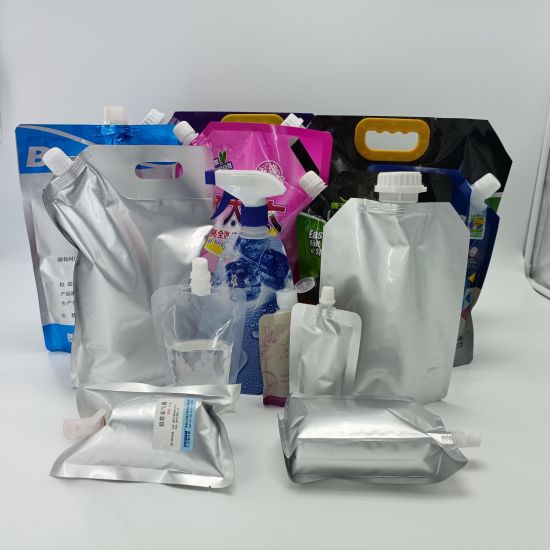
Flexible packaging is essential in the food industry for preserving the freshness and extending the shelf life of various products like meat, snacks, and frozen foods.
Sensitive pharmaceutical products require specialized flexible packaging solutions that offer strong barrier properties against moisture, light, and oxygen.
Lotions, creams, and other personal care products often come in squeeze tubes or sachets made from multi-layer flexible packaging materials to maintain product integrity.
Flexible packaging also has wide-ranging applications in the industrial sector, especially for packing bulk items like chemicals, adhesives, and coatings.
Barrier qualities are crucial for preserving the contents, especially for perishable goods and pharmaceuticals. Materials must protect against factors like moisture, oxygen, and light.
Flexible packaging needs to withstand various stress factors such as transportation, handling, and temperature fluctuations without compromising the product inside.
The look and feel of the packaging play a significant role in consumer decision-making. High-quality printing options are available to make flexible packaging visually appealing.
One of the major advantages of flexible packaging is its lightweight nature, which cuts down transportation costs and the overall carbon footprint.
The move towards recyclable flexible packaging materials is gaining speed, fueled by consumer demand and new legislation.
Biodegradable options like paper and bio-based plastics are making inroads, offering a more sustainable end-of-life scenario for the packaging.
Flexible packaging often uses fewer resources in production, storage, and transportation compared to rigid packaging options, making it a resource-efficient choice.
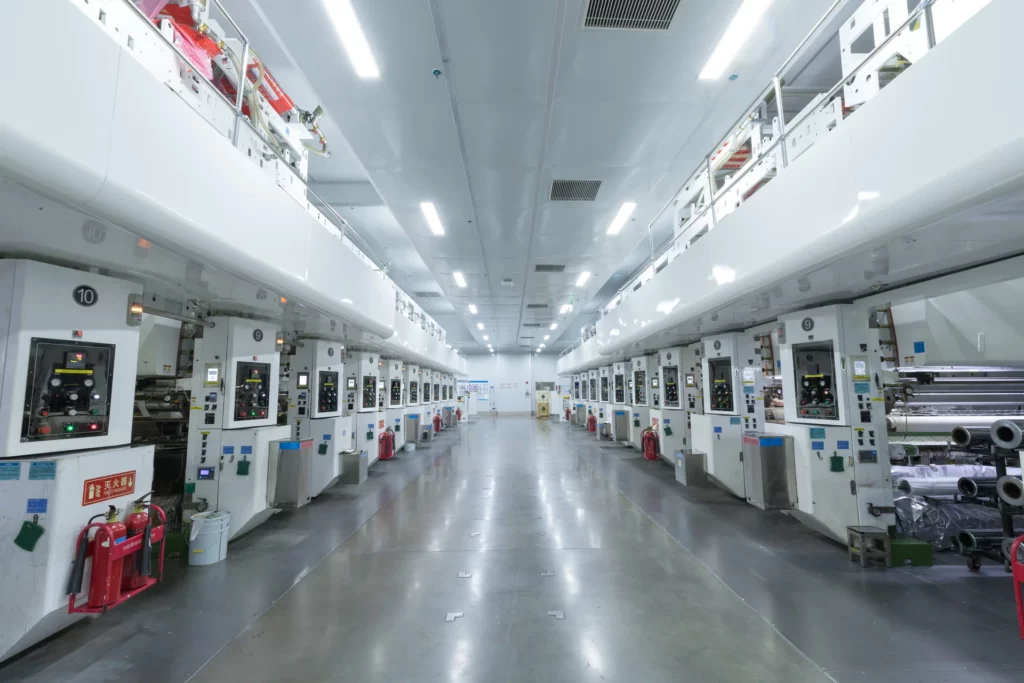
QR codes, NFC chips, and other smart technologies are being integrated into flexible packaging to offer added value like product information and authentication.
Technologies like moisture absorbers and oxygen scavengers are being incorporated to extend the shelf life and maintain the quality of the products.
The modern consumer is looking for convenience, sustainability, and value, driving innovation and trends in the flexible packaging industry.
Governmental regulations are pushing the industry towards more eco-friendly solutions, influencing material choices and recycling initiatives.
Flexible packaging is a dynamic field, adapting to meet various challenges from consumer demands to environmental concerns. Understanding the materials and their properties can help brands make informed decisions that align with both their marketing goals and sustainability commitments.
So, as you navigate through the world of flexible packaging materials, this guide should serve as a comprehensive resource to make informed decisions. Isn't it fascinating how something as seemingly simple as packaging can be so complex and impactful?
إن تغليف المواد الغذائية هو أكثر من مجرد وعاء لحمل منتجك؛ إنها أداة تسويقية قوية وضمانة لجودة الأغذية وسلامتها. ينصب تركيز هذا الدليل على تقديم نظرة شاملة على أكياس تغليف المواد الغذائية، ومناقشة الأنواع والمواد ومقاييس الاستدامة بشكل متعمق.
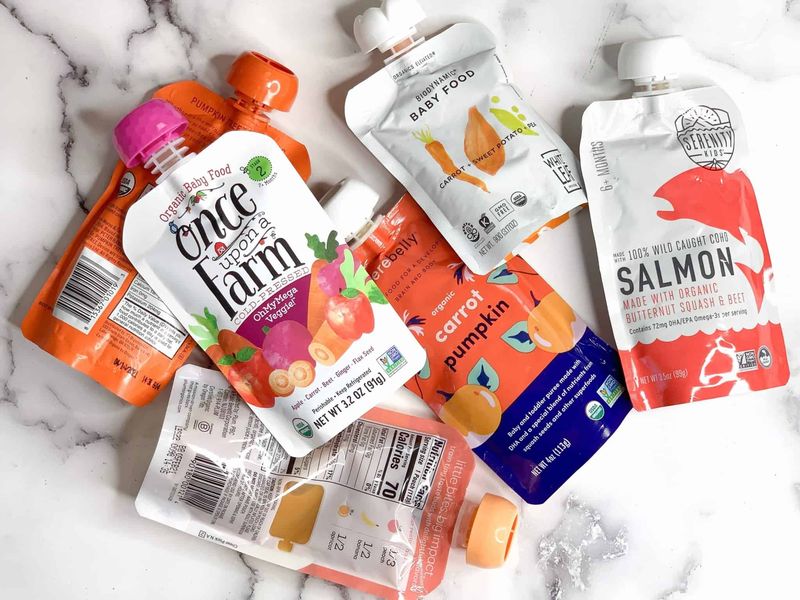
اكتسبت الحقائب القائمة شعبية بسبب جاذبيتها الجمالية وتصميمها الوظيفي. مع قاعدة متينة وغالبًا ما تأتي مع جزء علوي قابل للإغلاق، فهي مثالية لمجموعة متنوعة من المواد الغذائية مثل الوجبات الخفيفة والحبوب وحتى السوائل. كما يوفر التصميم المستقيم رؤية ممتازة على أرفف المتاجر.
الأكياس المسطحة هي الخيار الأمثل للحصص الفردية أو أحجام عينات المنتجات. هذه الأكياس صغيرة الحجم وغالبًا ما تستخدم للتوابل أو الصلصات أو الخلطات الفورية. كما أن بساطة تصميمها تجعلها فعالة من حيث التكلفة للشركات.
تعتبر الأكياس المعوجة ابتكارًا رائعًا في تغليف المواد الغذائية، مما يسمح بالمعالجة الحرارية للأغذية داخل الحقيبة نفسها. يؤدي ذلك إلى إطالة العمر الافتراضي للمنتج دون الحاجة إلى التبريد. وهي تستخدم عادة للوجبات الجاهزة للأكل والحساء والصلصات.
تستخدم في المقام الأول للمنتجات الغذائية السائلة أو شبه السائلة، وتأتي الأكياس المنفوخة مع صنبور قابل للإغلاق في الجزء العلوي أو في زاوية الحقيبة. هذا التصميم يجعله مناسبًا للاستخدام المتكرر ويحظى بشعبية خاصة بالنسبة لعناصر مثل المشروبات والصلصات وحتى أغذية الأطفال.
تم تصميم الأكياس المفرغة من الهواء لإزالة الهواء من العبوة قبل إغلاقها، مما يطيل العمر الافتراضي للمادة الغذائية إلى حد كبير. تعتبر هذه الأكياس مثالية للسلع القابلة للتلف مثل اللحوم والأسماك وبعض أنواع الألبان.

نظرًا لتكلفته المنخفضة وخصائصه المتعددة الاستخدامات، يعد البلاستيك المادة الأكثر استخدامًا. ومع ذلك، فإن المخاوف بشأن الاستدامة تقود التغييرات في اختيار المواد.
يوفر الألومنيوم خصائص حاجز ممتازة ضد الرطوبة والهواء ولكنه يثير مخاوف بيئية بسبب تعقيدات إعادة التدوير وعملية الإنتاج كثيفة الاستخدام للطاقة.
أصبحت المواد البلاستيكية الحيوية، المصنوعة من موارد متجددة، ذات شعبية متزايدة كبديل مستدام للمواد البلاستيكية التقليدية.
غالبًا ما تجمع المواد المركبة بين أفضل خصائص المواد المختلفة، مثل البلاستيك والألومنيوم، لإنشاء حقيبة أكثر وظيفية ولكنها صعبة إعادة التدوير.
تلعب العناصر المرئية، بما في ذلك الشعارات وصور المنتج وزخارف التصميم الفريدة، دورًا محوريًا في جذب انتباه المستهلك.
يمكن أن يؤدي اختيار الألوان والخطوط إلى نقل رسالة علامتك التجارية وجودة المنتج بمهارة، مما يؤثر على إدراك المستهلك وصنع القرار.
إن وضع العلامات الدقيقة والشفافة، التي تغطي الحقائق الغذائية والمكونات وتعليمات الاستخدام، ليس مجرد متطلب تنظيمي ولكنه أيضًا جانب حيوي لثقة المستهلك.
تضيف أقفال السحاب طبقة من الراحة والأداء الوظيفي، مما يسمح للمستهلكين بالحفاظ على المنتج طازجًا بعد فتحه.
تعمل هذه الشقوق الصغيرة المقطوعة مسبقًا على تبسيط عملية الفتح، مما يعزز تجربة المستخدم بشكل كبير.
توفر الأختام الواضحة للتلاعب طبقة إضافية من الأمان، مما يضمن عدم التدخل في المنتج أثناء رحلته من المصنع إلى المستهلك.
تشتمل بعض الأكياس على ميزة تدفق الغاز التي تستبدل الهواء الموجود داخل الحقيبة بغاز خامل، وبالتالي الحفاظ على جودة المنتج لفترة ممتدة.
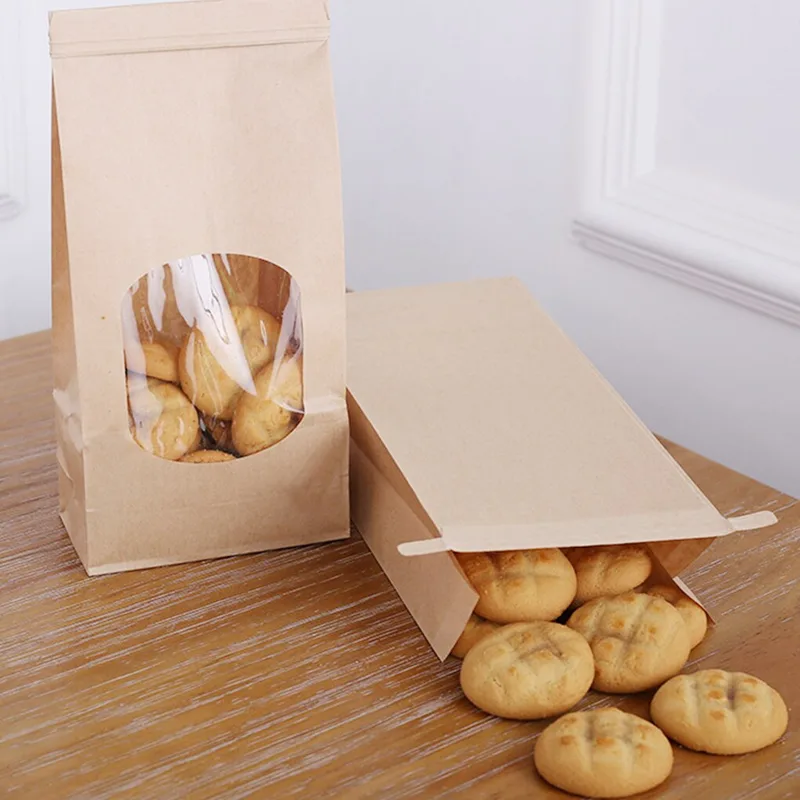
تعد العديد من الشركات رائدة في خيارات الأكياس القابلة للتحلل الحيوي، والتي عادة ما تكون مصنوعة من نشا الذرة أو مواد نباتية أخرى.
يكتسب الضغط من أجل المزيد من خيارات التغليف القابلة لإعادة التدوير زخماً، مدفوعاً بطلب المستهلكين والتغييرات التنظيمية.
الأكياس القابلة لإعادة الاستخدام، المصنوعة من مواد أكثر متانة، تدخل السوق، وتستهدف المستهلكين المهتمين بالبيئة والمستعدين للاستثمار في التغليف المستدام.
يقدر المستهلك الحديث الراحة، مما يجعل ميزات مثل الأسطح القابلة للإغلاق والشقوق سهلة الفتح شائعة بشكل متزايد.
مع تزايد الوعي حول التأثير البيئي لنفايات التعبئة والتغليف، أصبح المستهلكون أكثر استعدادًا من أي وقت مضى لاختيار خيارات صديقة للبيئة.
يمكن أن تؤثر الحزمة الجذابة بصريًا بشكل كبير على قرار المستهلك بالشراء، مما يجعل عناصر التصميم حاسمة.
يجب أن يتوافق تغليف المواد الغذائية مع معايير إدارة الغذاء والدواء (FDA)، التي تغطي كل شيء بدءًا من المواد المستخدمة وحتى متطلبات وضع العلامات.
وبصرف النظر عن الحقائق والمكونات الغذائية، يجب أن تتضمن الملصقات أيضًا تحذيرات من مسببات الحساسية، وفي بعض الحالات، معلومات حول إعادة التدوير.
يتيح دمج رموز QR أو تقنية NFC للمستهلكين الوصول إلى معلومات المنتج الإضافية والوصفات وحتى التحقق من أصالة المنتج.
ظهرت فكرة التغليف الصالح للأكل كفكرة جديدة، وهي توفر بديلاً خاليًا من النفايات ويمكن أن تكون مستقبل التعبئة والتغليف الغذائي المستدام.
تتخذ الشركات خطوات واسعة في اعتماد مبادئ الاقتصاد الدائري، بهدف إنشاء عبوات يمكن إعادة تدويرها أو تحويلها إلى سماد بسهولة.
مع استمرار العالم في التطور، كذلك الحال بالنسبة لأكياس تغليف المواد الغذائية. من الأنواع والمواد المختلفة إلى التركيز المتزايد على الاستدامة وتفضيلات المستهلك، تعد أكياس تغليف المواد الغذائية أكثر من مجرد حاويات؛ إنها عنصر مهم في نجاح المنتج. وبينما نتطلع إلى المستقبل، ستستمر الابتكارات ومتطلبات المستهلكين في تشكيل هذه الصناعة الديناميكية.
لذا، في المرة القادمة التي تكون فيها في متجر البقالة، ربما ستنظر إلى تلك الأكياس الموجودة على الرفوف بشكل أكثر تفكيرًا، أليس كذلك؟
إن ممر القهوة في متجرك المحلي ليس مجرد مجموعة من ماركات ونكهات القهوة المختلفة؛ إنها ساحة معركة لتصميم التغليف ووظائفه. يمكن أن يؤثر شكل كيس القهوة وملمسه ووظائفه بشكل كبير على قرار الشراء الخاص بك. يهدف هذا الدليل الشامل إلى التعمق في عالم أكياس القهوة متعدد الأوجه، ومناقشة الأنواع والميزات ومسألة الاستدامة البالغة الأهمية.
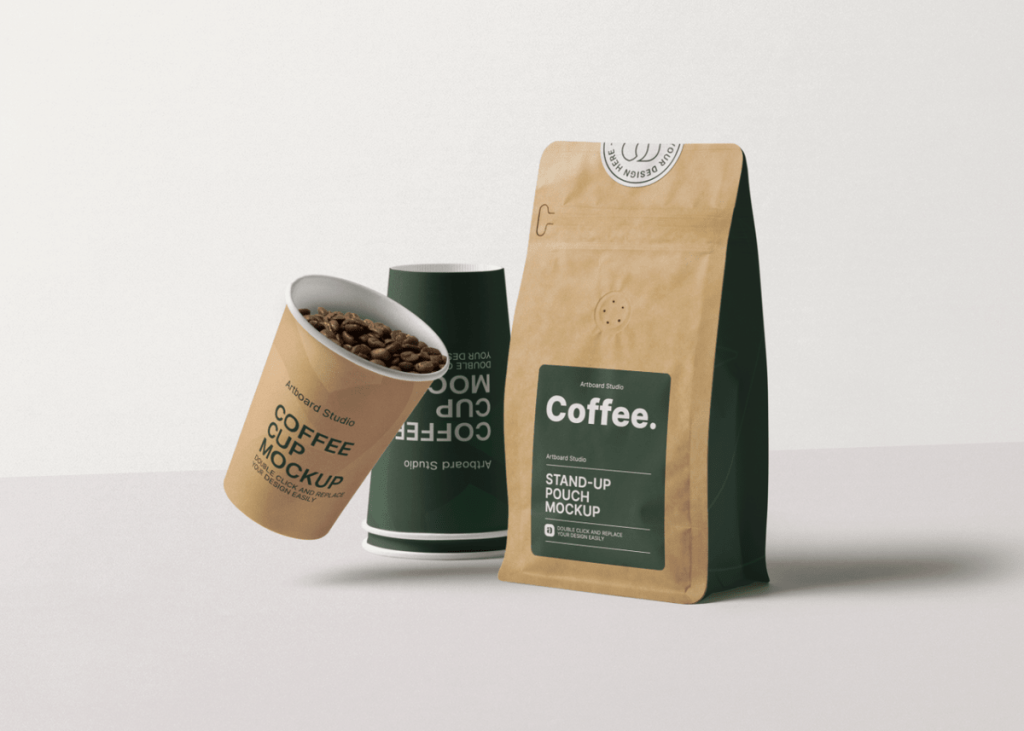
أحد أكثر أنواع أكياس القهوة شيوعًا هو كيس الصمام. صُممت هذه الأكياس خصيصًا لإخراج الغازات المنبعثة من حبوب القهوة المحمصة حديثًا، وتضمن بقاء الحبوب طازجة لفترة طويلة. يعد الصمام ميزة مهمة تمنع الكيس من الانفجار بسبب الغازات المحتبسة بينما يمنع الهواء الخارجي من الدخول وإفساد القهوة.
هذه الحقائب هي أكياس القهوة التقليدية الخاصة بك في المدرسة القديمة ولها ألواح تقوية على كلا الجانبين تتوسع عند امتلاء الكيس. إنها متعددة الاستخدامات ومفيدة بشكل لا يصدق لتعبئة البن المطحون والحبوب الكاملة. هيكلها أكثر ملاءمة للكميات الكبيرة، مما يجعلها مشهورة بين موردي القهوة.

تم تصميم الأكياس القائمة للوقوف بشكل منتصب على الرف، مما يوفر رؤية ممتازة وسهولة الوصول إليها. تأتي عادةً بسحابات قابلة للإغلاق وهي مثالية للمستخدمين الذين يفضلون سهولة تخزين القهوة دون الحاجة إلى حاوية إضافية.
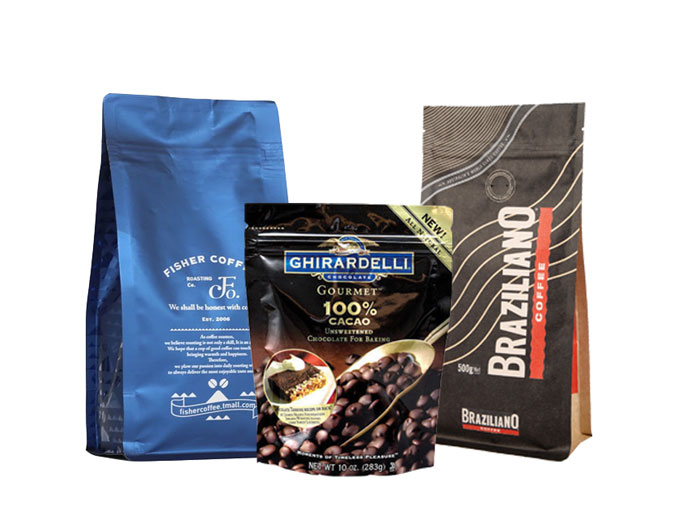
تحتوي الأكياس ذات الختم الرباعي على أختام على جميع أركان الحقيبة الأربعة. تسمح هذه الميزة الفريدة لها بالحفاظ على شكلها بشكل أفضل وتوفر حماية معززة ضد العوامل الخارجية مثل الرطوبة والهواء، مما يضمن بقاء قهوتك طازجة لفترة طويلة.
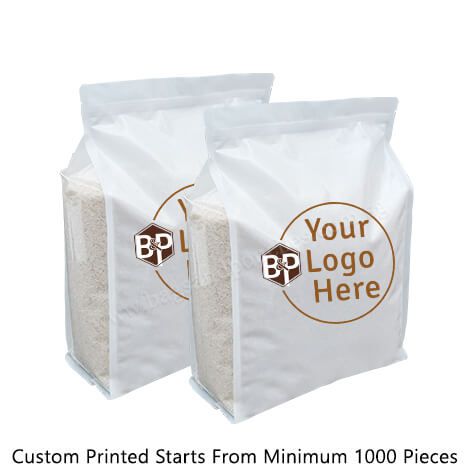
غالبًا ما تُصنع أكياس كرافت من الورق وتعتبر خيارًا صديقًا للبيئة. تتوافق هذه الحقائب بشكل جيد مع طلب المستهلكين المتزايد على التغليف المستدام. عادة ما تكون مبطنة بطبقة من رقائق الألومنيوم، والتي تعمل كحاجز للضوء والأكسجين والرطوبة، وكلها يمكن أن تؤدي إلى انخفاض جودة القهوة.
البلاستيك خفيف الوزن، ومرن، ورخيص نسبيًا، مما يجعله مادة شائعة لأكياس القهوة. ومع ذلك، فهو ليس خيارًا مثاليًا من منظور بيئي لأنه من غير المرجح إعادة تدويره ويمكن أن يساهم في النفايات.
يعد الألومنيوم حاجزًا ممتازًا للضوء والأكسجين والرطوبة، وكلها أعداء لنضارة قهوتك. ومع ذلك، فهي مادة كثيفة الاستهلاك للطاقة، ولا يمكن لجميع برامج إعادة التدوير التعامل معها، مما يجعلها خيارًا أقل من مثالي للمستهلكين المهتمين بالبيئة.
الأكياس الورقية قابلة للتحلل ويمكن أن تكون خيارًا جيدًا من الناحية البيئية. ومع ذلك، فهي مسامية، وبالتالي فهي ليست الأفضل لتخزين القهوة على المدى الطويل، لأنها تسمح بدخول الهواء والرطوبة.
تستخدم بعض الحقائب مزيجًا من المواد مثل البلاستيك والألومنيوم والورق لتحقيق أقصى قدر من فوائد كل منها. في حين أن هذا يجعل الحقيبة عملية للغاية، إلا أنه يمكن أن يجعل إعادة التدوير تحديًا، حيث يجب فصل المواد المختلفة قبل إعادة تدويرها بشكل فردي.
يمكن للتصميم الجذاب المكتمل بالرسومات والصور الجذابة أن يؤثر بشكل كبير على اختيار المستهلك. لا تجذب الصور عالية الجودة الانتباه فحسب، بل يمكنها أيضًا نقل جودة وأصالة القهوة الموجودة داخل الكيس.
الألوان ليست للعرض فقط؛ أنها تلعب دورا هاما في علم نفس المستهلك. قد تشير الألوان الترابية إلى القهوة العضوية أو المصنوعة يدويًا، في حين قد تشير الألوان النابضة بالحياة والجريئة إلى نكهة فاكهية أو غريبة.
تعد الطباعة الواضحة والأنيقة ضرورية لنقل معلومات المنتج المهمة دون إرباك المستهلك. يجب أن يكون الخط مقروءًا، ويجب أن ينقل النص قصة العلامة التجارية أو أصل القهوة أو حتى تعليمات التخمير بشكل فعال.
تساعد صورة العلامة التجارية المتسقة على بناء الثقة وتعزيز ولاء العملاء. يتضمن ذلك أنظمة ألوان وطباعة ورسومات موحدة عبر جميع خطوط الإنتاج، بما في ذلك أكياس القهوة.
التأكد من أن الكيس محكم الإغلاق يضمن بقاء قهوتك طازجة لفترة أطول. يتم ذلك غالبًا باستخدام تقنيات الختم الحراري أو عمليات الإغلاق المتخصصة مثل السوستة أو المشابك.
القهوة الطازجة تنبعث منها غازات؛ لذلك، من الضروري وجود صمام تفريغ للسماح لهذه الغازات بالهروب دون السماح للهواء بالدخول. وهذا يمنع الكيس من الانفجار ويحافظ على القهوة طازجة.
تضيف السحابات طبقة من الراحة للمستهلك، مما يسمح له بإعادة إغلاق الكيس بسهولة بعد كل استخدام، وبالتالي الحفاظ على نضارة القهوة.
وهي عبارة عن شقوق صغيرة مقطوعة مسبقًا تسهل على المستهلك فتح الحقيبة دون الحاجة إلى مقص أو سكاكين، وبالتالي تعزيز تجربة المستخدم الشاملة.
مصنوعة من مواد مثل نشا الذرة أو قصب السكر، وتتحلل الأكياس القابلة للتحلل بشكل طبيعي مع مرور الوقت، ولا تترك أي أثر. يعد هذا خيارًا جذابًا للمستهلكين المهتمين بالتأثير البيئي.
من السهل إعادة تدوير الأكياس المصنوعة من مادة واحدة، والتي غالبًا ما تكون مصنوعة بالكامل من نوع واحد من البلاستيك أو الورق، وبالتالي أصبحت ذات شعبية متزايدة.
يمكن للأكياس المصممة للاستخدامات المتعددة أن تقلل النفايات بشكل كبير. غالبًا ما تأتي هذه بأختام متينة ومصنوعة من مواد سهلة التنظيف وإعادة الاستخدام.
في الاقتصاد الدائري، يتم إعادة تدوير المنتجات والمواد وإعادة استخدامها قدر الإمكان، مما يقلل من النفايات. يتجه مصنعو أكياس القهوة بشكل متزايد نحو هذا النموذج من خلال إنشاء أكياس قابلة لإعادة التدوير ومصنوعة من مواد معاد تدويرها.
إن توفير معلومات واضحة ودقيقة حول ما يوجد داخل الحقيبة لا يلبي المتطلبات القانونية فحسب، بل يبني أيضًا ثقة المستهلك.
يهتم المستهلكون بشكل متزايد بمصدر قهوتهم. إن تقديم معلومات عن مصدرها يمكن أن يؤثر على قرارات الشراء بل ويسمح لك بتحصيل علاوة.
هذه معلومات حيوية يجب عرضها بوضوح. يحتاج المستهلك إلى معرفة المدة التي يمكن أن يتوقع أن تظل فيها القهوة طازجة.
مع التركيز المتزايد على الاستدامة، أصبحت المعلومات حول كيفية إعادة تدوير الحقيبة أمرًا بالغ الأهمية. يمكن أن يؤثر هذا على قرار المستهلك بشراء منتجك بدلاً من الآخرين.
يمكن أن يلعب التصميم والجاذبية البصرية دورًا مهمًا في اختيار المستهلك، وغالبًا ما يكون بمثابة نقطة الجذب الأولى أو الرفض.
يمكن أن تساهم الميزات العملية مثل السوستة القابلة للإغلاق، وصمامات تفريغ الغاز، والملصقات الواضحة في قرار المستهلك بشراء علامة تجارية واحدة على أخرى.
يبحث عدد متزايد من المستهلكين عن خيارات صديقة للبيئة وهم على استعداد لدفع ثمن أعلى للمنتجات المستدامة.
ليست كل المواد المستخدمة في أكياس القهوة قابلة لإعادة التدوير، ولا يستطيع جميع المستهلكين الوصول إلى مرافق إعادة التدوير المناسبة، مما يخلق تحديًا كبيرًا للاستدامة.
يوفر التقدم في علوم المواد وتكنولوجيا التعبئة والتغليف إمكانية إنتاج أكياس قهوة أكثر استدامة وعملية وجاذبية في المستقبل.
من التركيز المتزايد على الاستدامة إلى التحولات في تفضيلات المستهلك، ستؤثر اتجاهات السوق المختلفة على مستقبل تصميم أكياس القهوة وتصنيعها.
أكياس القهوة ليست مجرد حاويات؛ فهي عنصر حاسم في سلسلة توريد القهوة، وتؤثر على خيارات المستهلك وتؤثر على جودة المنتج وطول عمره. وبينما نتطلع إلى المستقبل، يبدو أن التركيز يتحول أكثر نحو الخيارات المستدامة دون المساس بالوظيفة أو المظهر الجمالي. إنه مطلب طويل الأمد، ولكن الصناعة مستعدة للوفاء به، مما يجعل كل فنجان من القهوة أفضل بكثير بالنسبة لك وللكوكب.
وهناك لديك! نأمل أن يكون هذا الدليل مفيدًا وغنيًا بالمعلومات. في المرة القادمة عندما تجد نفسك في ممر القهوة، ستنظر إلى تلك الحقائب بشكل مختلف قليلاً، أليس كذلك؟
